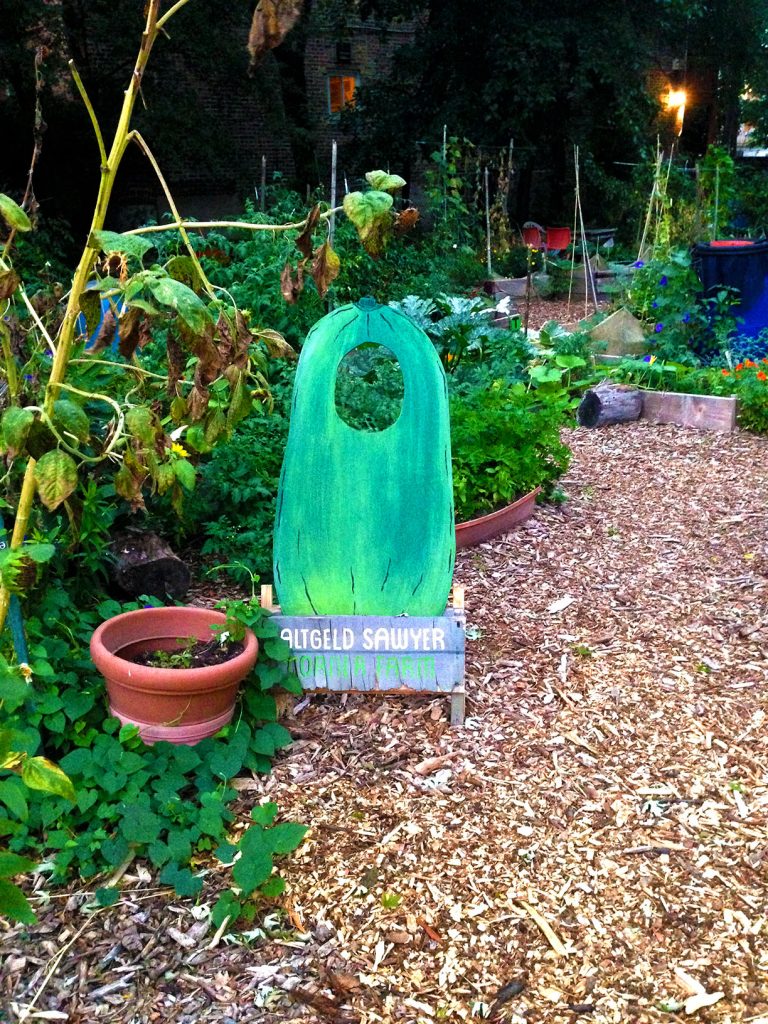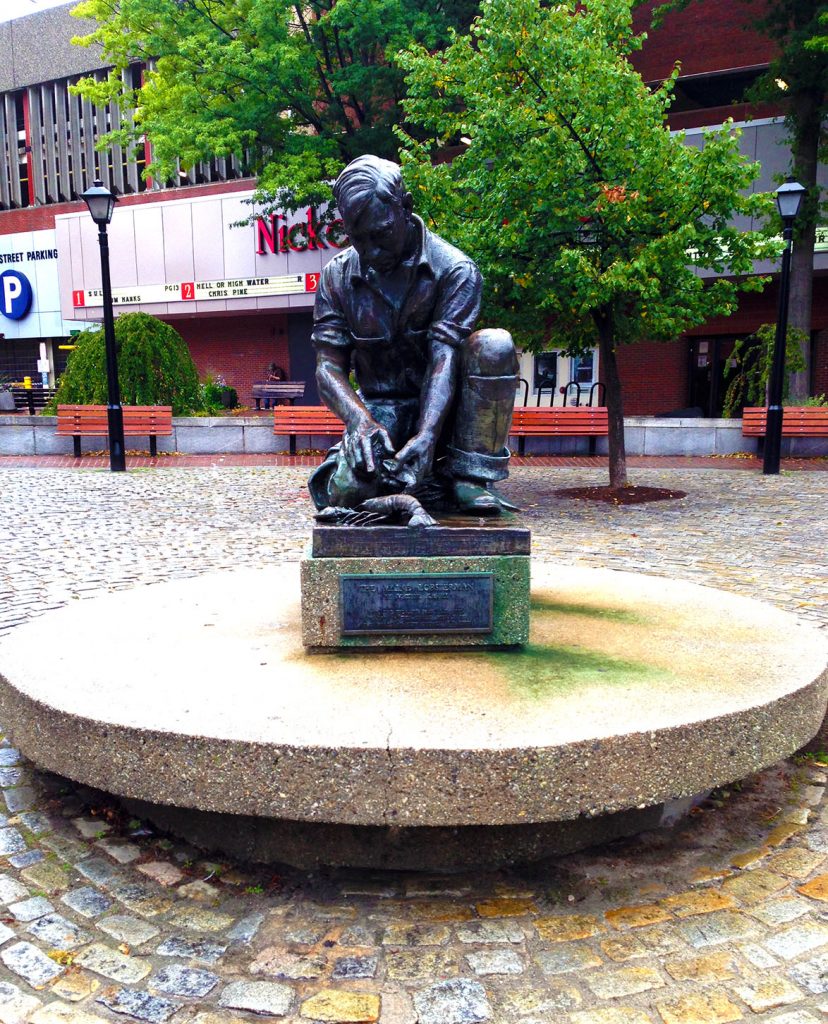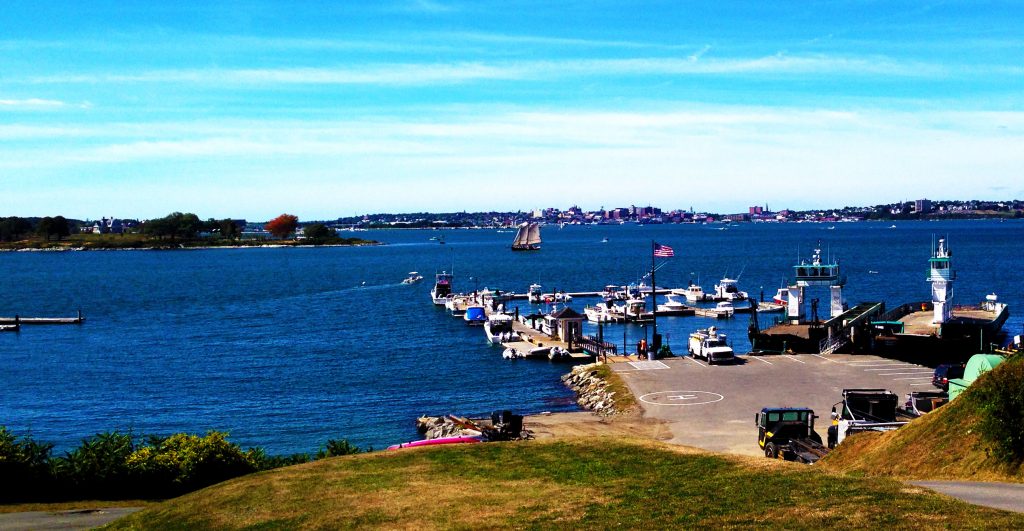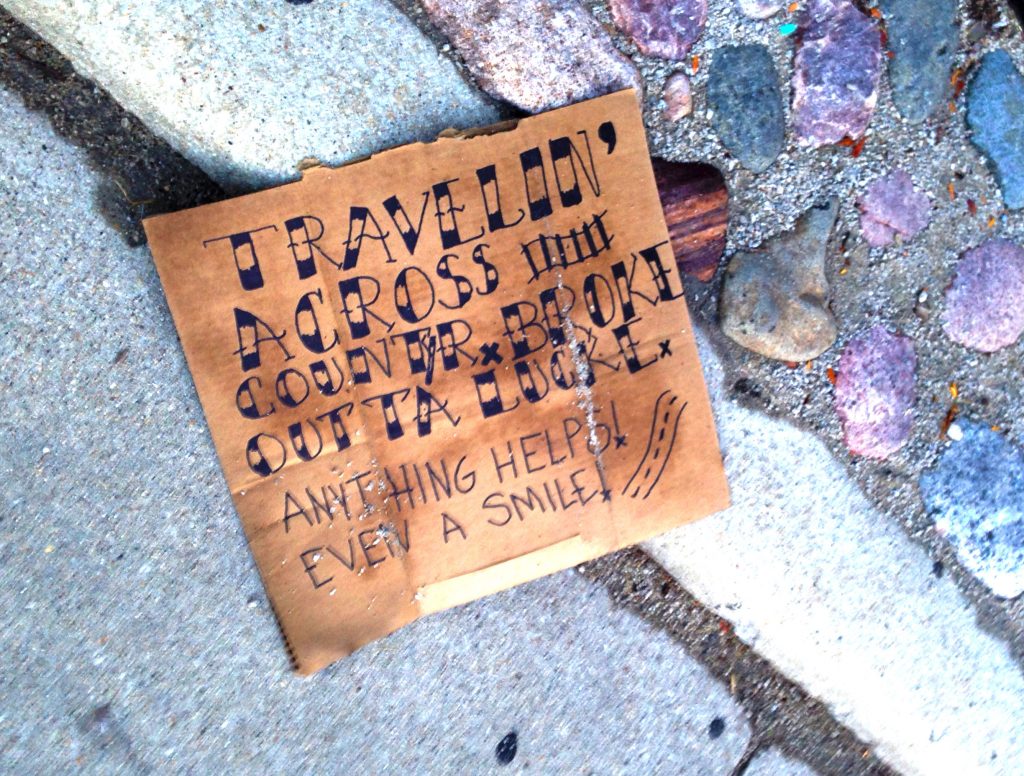Living: airbnb in Logan Square, Chicago, IL
Working: onsite @client
Laundry: HT Laundromat, Logan Square
This week in laundry I show some respect.
The coworking space in Portland Maine hosted a lunch and learn last week. The speaker works in education. Her presentation reflected on her time spent building effective education programs in West Africa, and Sierra Leone in particular.
What she had to show the group I found fascinating. Although I was still at my desk, apart from the presentation, nose-down in a circuit board, that did not mean I could not hear. What I heard was a reflection on what it took to bring efficacy to the native teachers’ methods. What she showed was a program she developed to do so.
First, she asked the teachers what actions the students take to show them disrespect. The teachers reflected. They created lists: the rolling of the eyes, talking while the teacher was talking. The lists went on.
Then, our presenter simply asked – that the teachers take this list, this list of signs of disrespect, and to watch their own actions for these signals. To catch themselves in the acts of disrespect – as dictated by their own standards. And when they see these behaviors in themselves, to simply stop them.
In short she asked the teachers to show their students respect. And the result? That the teachers found respect from their students in turn.
I love this program. I love the story of this program – there’s so much going on here in this very simple act. A simple exercise, rich in complexity.
First is the notion that the students reflect the behaviors of their superiors; they do as they do not as they say. If they see their leaders, their teachers, act in ways that signify respect, the students adopt that behavior as well. They give it in return. People act in mimicry to the actions of first their superiors, and further their peers, in their immediate environment.
Further, beyond behavior adoption, lies a simple notion: respect begets respect. And disrespect begets disrespect. It’s a simple notion, obvious on the surface. And yet, in practice, it so often slips away from us.
There’s a variety of reasons why. Most notably there’s escalation. In an engagement between two people, if one shows a minor, uncontrolled action of disrespect, the other digests that, and may respond in turn with a minor, slightly stronger, reflection of disrespect. And so the exchange in escalating signs of disrespect builds. Tick for tack. For tickier for tackier.
Finally, and perhaps most interesting, is that respect must be shown. But how do you show respect? What does it mean to show respect? And how do you know, when someone else acts in an intentional way, that respect is being shown?
The answer is it must be learned. They are rules. And like I’ve written before, because they are rules, they may be explicitly codified by law. Or implicitly learned.
But because they are rules, they are rules of culture. Respect signifiers are culturally relevant. They vary from culture to culture. And much like many variations in culture – the differences in respect signifiers might change significantly globally, and vary in minor ways nationally.

I respect whomever placed this car surfing dino atop their vehicle. Spotted on Peak’s Island, Casco Bay
Some of the ways the people of Sierra Leone show respect may be very different from the ways we show respect in the United States. And some may be very similar.
Perhaps the root of that similarity resides in the common nature of respect itself. While the signifiers might vary culture by culture, respect itself is universal to human nature at its core. And is not necessarily unique to humans.
Inherent to the notion of respect lies the notion of power. The two go hand in hand. If nothing else, because those of lesser power show those of greater power respect – while those of greater power do not need to show those of lesser power respect. Respect reflects the cultural hierarchy of resource control.
And power is a powerful thing. It’s valuable to those who have it. Those with greater power and higher influence control more resources. Most cultures self-organize in some manner to help control complexity of their society. In as much, they develop mechanisms and signifiers to reflect and acknowledge this organization of power. It establishes and communicates throughout the cultural group a mutual understanding. An implicit acknowledgement of who’s the boss.
Cultures that organize their power through strict hierarchy, like a ladder, develop upward looking respect structures to reflect this. While cultures that organize their power hierarchy more like a woven, interconnected web, tend to reflect respect mutually towards each other.
Though very often our modern complex and overlapping cultures inherit combinations of those two structures.

And sometimes communities self organize urban farms. The Altgeld Sawyer Corner Farm in Chicago
On the smallest level, we see this interaction amongst parents to children, and children amongst their siblings. On the largest level, we see this in corporate workers to their MBA toting managerial system, the managers to the officers, the population to their governors, the people to their presidents, and presidents to foreign ministers. In tokens of respect, or lack thereof. Each a reflection of power. Each a reflection of resource control.
And it’s clear to me, it can’t not be, that here in America our culture is complex and diverse. It changes regionally. It changes by class. It changes by race. And it changes by political association.
And so if our culture changes, in both major and minor ways, across each these individual ethnic groups and cultural alliances, and respect signifiers are culturally relevant and culturally learned, then the ways in which we signify respect – what it means to be respectful – must also vary as dramatically as any other facet of culture between these diverse cultural groups.
What does it mean to show respect, in the American urban ghetto, amongst one’s cultural peers? What about as an outsider?
What does it mean to show respect in the board rooms of America’s elite corporations?
What does it mean to show respect on the floor of the New York stock exchange – where the wearing of jeans is prohibited?
What does it mean to show respect in the home of a veteran? In the home of a lesbian? In the home of a Republican? In the home of Alan Greenspan?
These are all great questions – and they should be asked. Because if you grew up in these environments, you already know. You learned the meaning of respect like every other facet of culture – as an implicit rule taught through behavior repetition and instruction.
But if you are not from within those groups, then how can you possibly know? If the knowledge of how to signify respect in not baked into your every operation as an intuition, then what must you do? It must be learned, and it must be known through a much more conscious and direct mechanism. Like learning a foreign language at the age of 40 – for most, it’s a struggle, quite different from the ease of a child at the age of five.
In America we’ve been talking a lot about respect recently, though we might not necessarily call by that name. Part of that has to do with the election season – and particularly with a candidate that balks at the notion of entertaining political correctness. In fact, he’s developed a reputation for it. And many people celebrate him for this very behavior.
But what does it mean to be politically correct? One political commentator reflected, the best that he could tell, that eschewing political correctness amounts to nothing more than not wanting to show respect, but by a lesser term.
And while the desire to express respect is certainly a component in political correctness, It’s not the only one. Because it’s not the only component in showing respect.
In order to show respect, two things must happen. First, the desire to show respect must be there – the intent for respect needs to be present to cause action. But in order to show that respect, which is only culturally relevant, the proper respect signifiers must be known. You have to know how express respect to the person or people you want to show respect toward in the terms of his, her, or their unique cultural rules.
You have to want to show respect, know how to show respect, and then you can show it.
That’s the correctness in political correctness. You must correctly know how to show respect. And maybe a better term would be cultural correctness for this form of respect – for really it is the rules of the culture that you must correctly know.
And yet respect is intimately tied to power – to the control of resources, and the influence of others. Respect is tied to politics in this nature. Because respect reflects the cultural political hierarchy. So to show respect is to reflect a state of politics in a situation. And to do so correctly, according to the relevant cultural rules, yields a knowledge of respect: a political correctness.
And if you stop to reflect just how diverse American culture is – how different the culture manifests by region, class, race, and even religion, and then consider further that each of those cultures can combine together or apart, and that each of those combinations contains a unique set of rules which dictate the meaning of respect – it’s easy to understand just how exhausting it is to try and be politically correct – to try and correctly show respect – to each and every person in each and every microculture here in America. Especially as communication and transportation blur the lines between us all.
I think this is why people so often disdain at political correctness. At cultural respect. And they champion someone who simply says “I’m not going to bother.” Because it’s exhausting to even know all the rules of respect across the vast array of American microcultures. Let alone execute on them properly. I think we all feel that pain.
But when do we start to confuse the pain of memorizing respect signifiers from a dislike of wanting to show respect at all? We all like to be shown respect. And in order to be shown respect, in the strictest since of collaborative community, respect should be shown in turn.
Even more than that – there’s a value in not showing respect. Because people who do not show respect are the people who have power. That’s the core of the purpose behind respect – to confirm and display this very notion. And there’s an advantage to being in power – to be in control of the resources. Because when you control the resources, you ensure a security that you have the resources you need to survive. To thrive.
And so somewhere in the nuances of these two components to respect – the knowledge of how to show respect, and the desire to show it, I think we often leverage the exhaustion of the former as an excuse to avoid the latter – which is the more important part. In doing so, we find an excuse to exercise an expression of power – not showing respect – by blaming the exhaustion of knowing how to instead of blaming the fault of not wanting to show respect at all.
And it’s at work everywhere from the microcosms of intrafamily arguments, to the macromanifestations of presidential candidates. In the celebration of the latter, we find a cultural justification and acceptance of this behavior. We make it culturally acceptable to acquire the appearance of power by avoiding respect signifiers. We allow this at the excuse of exhaustion from learning those signifiers, rather than the likelier lack of desire to show them at all.
Our political march to presidency isn’t the only recent role of respect fresh in our minds and on our tongues. There’s the recent protests during national anthems at highly publicized sporting events as well. The protest itself takes many different forms. Some sit, and passively avoid participation. Some kneel in active opposition. And some stand, holding their fist in the air as an echo to the Black Panther Party.
The catalyst to all this protest comes in the form of one Colin Kaepernick. Reportedly now the most hated man in American football. His simple protest began by sitting on the bench during the national anthem. It was only after doing this thrice that someone bothered to ask why. When he gave his answer – as a form of protest against racial inequality – everything exploded.
His form of protest evolved to a kneel. Others joined him, in similar, or modified forms of protest. And others, offended by his protest, took to purchasing his jersey in order to burn it. This made it for a time the top selling Jersey on the official NFL website.
If you were to strip all the meaning from the action of kneeling, from the national anthem, and from the singing of that anthem at sporting events, what is it about kneeling during a song that inspires so much hatred among so many people? You can’t answer that question without talking about respect. You can’t answer that question without the intentful meaning behind those actions. Without the meaning behind the singing of the song, our anthem. Behind the kneeling during the song.
Because it’s more than just a song. And it’s more than just kneeling. That it is more than just these things is because we chose to give them meaning.
And in fact, Kaepernick’s transition from a passive sit to an active kneel is a result of a desire to show respect – as a result of wanting to continue a dialog through protest, while also attempting to show respect to active and veteran military.
To many people sitting during the nation anthem is disrespectful. To many others, it is not. To many kneeling during the national anthem is also disrespectful. To others still, it is not. It depends on the person. It depends upon the culture of that person. And that person may cohabit many cultural identities. All defined by region, religion, political affiliation, economic class, race, and more.
A protest is a form of criticism. How that protest manifests draws more or less upon a show of disrespect. And since respect is culturally defined, it might vary depending on the recipients of that criticism. Depending upon those recipients’ culture. And if their culture is one that interprets any and all criticism as a sign of disrespect, then disrespect in protest is unavoidable.
What is your culture? What is my culture? What is our culture? Is it one in which we consider criticism constructive? Or one where we consider it disrespectful? When criticism is given, is it given in shame, or guilt? Is it taken as shame, or as guilt?
These are hard questions. But they’re important to ask. Because if we ask them, and find we don’t like the answers, then we can change them.
I fear that our modern American culture all too often embraces shame rather than guilt. And it intertwines with disrespect. And it all gets used as weapons of power – without us really realizing we’re using it. Protests of criticism morph into interpretations of disrespect and accusations of shame. It all ties tight into a giant entangled knot. In a thick heavy braid. The whip of power.
But it doesn’t have to. Because culture is defined by the people in it. And culture changes. It always has.
As for what respect might mean to me, in this present moment of the laundromat, the answer is quite clear. The door’s been locked. Last wash is through. The laundromat is closed. Respect on my part towards this establishment’s proprietress seems simple: finish up, pack out, and leave with a thank you as soon as possible. I have intent. I have knowledge. Now it’s time to make it happen.



